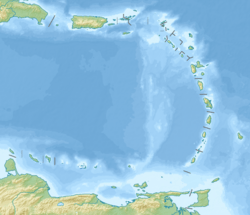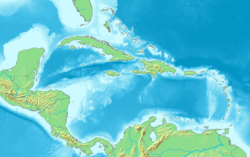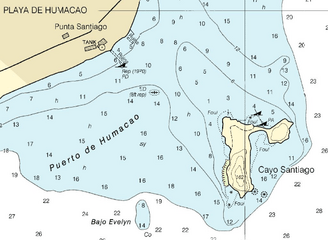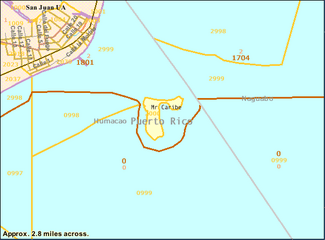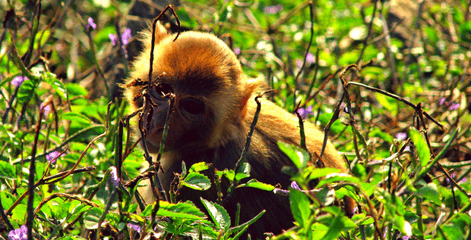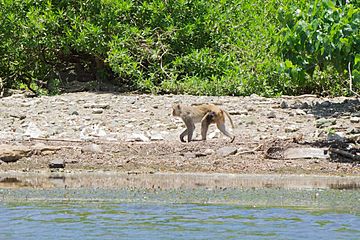Cayo Santiago facts for kids
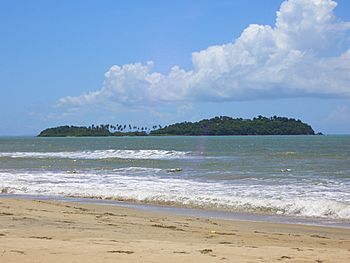 |
|
| Geography | |
|---|---|
| Location | Humacao, Puerto Rico |
| Coordinates | 18°9′23″N 65°44′3″W / 18.15639°N 65.73417°W |
| Area | 0.139179 km2 (0.053737 sq mi) |
| Length | 0.6 km (0.37 mi) |
| Width | 0.4 km (0.25 mi) |
| Highest elevation | 34.9 m (114.5 ft) |
| Highest point | El Morrillo or "Big Cay hill top" |
| Administration | |
| Commonwealth | Puerto Rico |
| Municipality | Humacao |
Cayo Santiago, also known as Santiago Island or Isla de los monos (which means Island of the Monkeys), is a small island. It is located about 1 kilometer (0.6 miles) east of Punta Santiago, near Humacao, Puerto Rico. This special island is famous for being home to a large group of monkeys.
Cayo Santiago: The Monkey Island
Cayo Santiago is a tiny island in Puerto Rico. It measures about 15 hectares (37.5 acres). The island has a "Small Cay" connected to the main "Big Cay" by a narrow sandy path. There is also a small rocky hill called El Morrillo on the island. This hill rises about 35 meters (115 feet) from the water.
In the late 1940s, the government of Puerto Rico took ownership of the island. They gave it to the University of Puerto Rico. Today, only scientists and researchers are allowed to visit the island. However, tourists can take a boat to see the island and its monkey residents from a distance.
Meet the Monkeys!
Since December 1938, Cayo Santiago has been home to a group of Rhesus monkeys. These monkeys live freely on the island. The first monkeys were brought from India. There were 30 of them. They were brought by Clarence R. Carpenter and a special school in San Juan.
Today, the monkey colony has grown to over a thousand animals! These monkeys are very important. They help scientists learn more about how monkeys live and behave.
Studying the Monkeys
The monkey colony on Cayo Santiago is a valuable resource for research. Scientists from many universities in the United States and Europe come here to study the monkeys. The research is supported by the National Institutes of Health and the University of Puerto Rico Caribbean Primate Research Center.
By observing these monkeys, researchers can understand many things. They learn about monkey behavior, health, and how they interact with each other. This helps us learn more about animals and even ourselves.
Cayo Batata is another small island nearby. It is about 6.4 kilometers (4 miles) southwest of Cayo Santiago. Cayo Batata is also part of Humacao and has no people living on it.
Gallery
See also
 In Spanish: Cayo Santiago para niños
In Spanish: Cayo Santiago para niños



